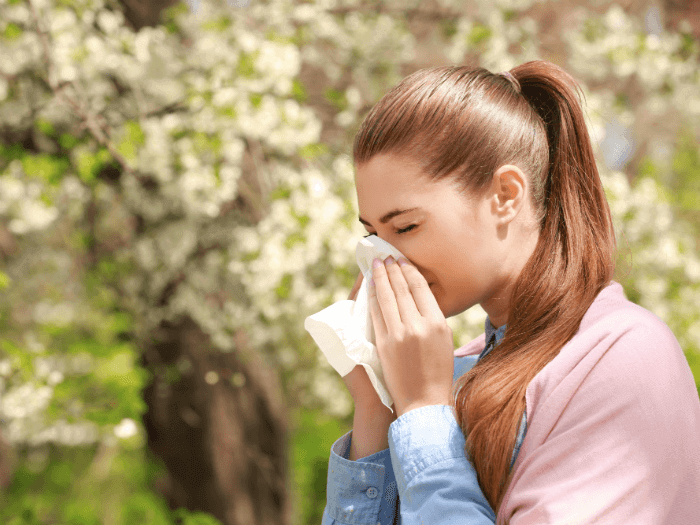
Have you had the bad fortune of walking down a path on a beautiful day and instantly the sky unleashes its anger with a crazy amount of downpour?
Or have you woken up one morning to have breakfast, only to discover that the milk has gone sour? Well, such is the case when the dreaded virus (COLD) starts gleaming at us with its first symptoms that begin with a faint scratch in the back of the throat.
Which we usually perceive as nothing, not until we become fully plagued with a full-blown congestive fury of mucus.
I believe we all have, at some point suffered in the hands of this unsuspecting virus with one singular mission—to make our lives a miserable living hell.
It might interest you to know that on average, an individual experiences cold as many as 200 times—over a lifetime. Maybe you are even down with one right now, causing your body temperature to rise and fall like the unrelenting tides of the sea, or worse still making you fill your bin with soggy tissues.
A single cold might not be of substantial importance, but if you take the time to calculate just how much pain and suffering this little virus causes to us over a lifetime. Then you will realize that it can be shrunk into five years of congestion, headache, coughing, sore-throat—and approximately one whole year in bed.
So, wouldn’t you agree that we should at least take a keen interest in this regular visitor that disrupts our lives unannounced? Or at least learn some remedies that can help suppress some of its symptoms, or better still find the best cough suppressants out there.
For a while now, there has been a healthy interest as to why it is called “common cold.” Some might say it’s because we feel cold when we have this ailment, others think it’s because we usually experience this dilemma in the colder seasons.
But there is one underlying phenomenon, cold, when translated to different languages, has plenty of similarities. raffreddore in Italian (from the Latin word frigidus), resfriado in Portuguese, and Erkältung in German. All of which translates to cold.
From the above paragraph, it is obvious that people all around the world experience this nightmare. Which begets the question; what is cold? Why do some people seem strongly resistant to colds while others seem to be vulnerable to just a sneeze? Can you actually fight one? Which remedies really work?
All these are questions that are constantly being asked by individuals, scientists and researchers alike. Which, in part, is what gave rise to this article. Coupled with the fact that Americans catch as many as a billion colds a year, and spend billions of dollars on medications to treat them.
Below are some few pointers as to how you can suppress, and manage a cold.
Placing of sanitizers at distinct places
Parents who seem to be vulnerable to their children’s cold, should endeavour to take measures in ensuring that they mitigate to a very great degree their chances of contracting this deadly virus. Such measures include:
- Placing a bottle of alcohol hand sanitizer at the door of every room in the house and use it as they enter and leave.
- They should minimally quarantine their kids when they are sick. This doesn’t necessarily mean that kids should be locked up in their rooms with duct tape sealed windows and doors.
- But instead to take precautions like laundering the children’s clothes and beddings separately, and using alcohol to disinfect their room surfaces—door knobs, crib rails, diaper pails—basically all the potential germ hangouts (wink).
- When you want to tuck your kids into bed and give them a goodnight kiss, make sure to kiss them on the head and then use alcohol sanitizer on your hands.
Wash your hands often and properly
Always try to wash your hands every time you come into the house, and also after any occasion that involves a lot of hand contacts, such as sports games or business meetings.
Or like a popular researcher and doctor once said, you can consider replacing the custom of the handshake with the Japanese practice of ojigi, the simple bow from the waist, which in his own words is: “a brilliant infection prevention strategy.”
Self-care
This advice is one of the oldest in the healthcare industry, and for good reasons too—it is solid advice. Eat well (lots of fruits and vegetables), sleep well, and make sure that you are physically active.
Instruct your kids (and yourself) against bad habits
The most common time for kids to contract cold viruses are usually around two weeks after kids return to school. They unknowingly pick up germs on their hands from contaminated surfaces and move them straight into their systems by putting fingers to the nose or eyes. And then bring home the virus to you.
A survey showed that training your kids not to self-inoculate in this way to a very large extent, reduced the incidence of colds.
In fact, there have been suggestions put forward that right-handed people should train themselves to touch their eyes and nose only with their left hands, using a “clean hand” for this purpose and a “dirty hand—right hand” for contact with the surroundings.
In conclusion, there is no one best medicine for treating or curing this annoying ailment that always comes into our lives unannounced, as there are several and varying bacteria and germs responsible for this nightmare. The best we can do is suppress and manage it.
